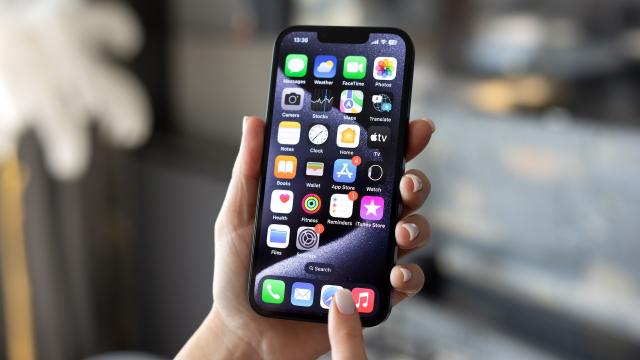Customization on iOS has come a long way. There was a time where user-selectable app icons were unthinkable: Now, you can make your apps look however you want them to. The same goes for your Lock Screen: For most of iPhone history, you could only choose the wallpaper, but since iOS 16, we’ve been able to totally personalize this experience as well. (Apple: Please let us change the flashlight and camera shortcuts.)
Although the lines between Android and iOS customization have been progressively blurring for years, Google still has Apple beat in one key area: app placement. See, for all of Apple’s newfound customization options, they’ve remained dedicated to their grid system. Apps always snap to the top-left corner of a page, and work across from there. You get four apps to a row, and when a new row starts, the next app appears in the first space on the left side of the display. Even when the company introduced widgets, this grid system keeps them locked in. If you place a widget on a blank Home Screen, it’ll snap to the top.
Android, on the other hand, does not limit you like this: You can put your app icons anywhere on the screen you want. As phones have gotten larger, it’s made sense to place apps on the bottom row of the screen, rather than the top, to make it easy to reach them with one hand. Sure, Apple is happy to let you place your most-used apps on the bottom rows on your iPhone, just as long as there are apps or widgets above them at all times.
The thing about this grid system is that it’s good for people who don’t like to customize their Home Screens. You don’t have to worry about apps being out of place, because iOS will always put them where they’re supposed to be. But for anyone who wants a modicum of control over how their Home Screen looks, this grid system is a pain in the ass. It forces users who really want to get creative with their Home Screens to do things like use invisible widgets to create the illusion of negative space in the grid.
This might be changing with iOS 18
If MacRumors and Bloomberg are correct, the rigid grid system might finally be coming to an end. Sources for both publications claim Apple’s iOS 18 will introduce more Home Screen customization, including the ability to more freely place app icons on the page. In true Apple form, this won’t be as free rein as it is on Android: It’s suspected Apple will introduce invisible blocks to allow users to push apps wherever they’d like to, while still respecting the built-in grid system. These blocks would act like widgets, just not visible: Where apps would normally snap to the top of the screen, this block would let you push them to other parts of the display. You could place a couple of these blocks at the top of the screen, so that you could have one or two rows of apps at the bottom of the screen, or cleverly place blocks to then place apps sporadically throughout your Home Screen, if that’s your thing.
Essentially, Apple is working on their own version of the invisible widget, and while it’d be nice to have a grid-less system, I, for one, welcome this potential change to iOS. While I enjoy many of the adjustments Apple has made to Home Screens customization in recently years, ultimately, the one change I’ve always wanted is the ability to put my app icons wherever I want them. Let’s hope this one pans out.
While there are no definitives yet, if Apple were to include this option with iOS 18, you can expect the company to announce during its WWDC presentation. Apple hasn’t confirmed a date yet, but WWDC 2024 will almost certainly happen in June, followed shortly thereafter by iOS 18 developer beta, for those who want to try the new features early. Apple will drop iOS 18 in the fall, almost assuredly in September. (The last time Apple released a major iOS update in a different month was iOS 5 in October of 2011.)

Leave a Reply
You must be logged in to post a comment.